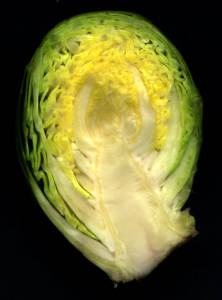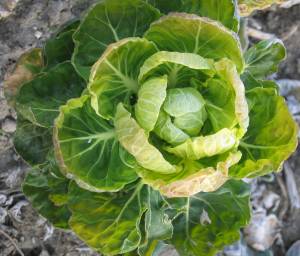Seemingly uniformly disliked by school children the world over, Brussels sprout is a cabbage like vegetable that is best served boiled, steamed or in a stir-fry. Its flavor is a love it or hate it thing and it is therefore not a particularly popular vegetable on supermarket shelves. This suits backyard growers perfectly, as fans of Brussels sprout will be able to grow far fresher and tastier vegetables than can be bought from any store.
Brussels sprout is best grown when the weather will be frosty. They can even survive snow, but temperatures higher than 25°C will not result in a tasty end product.
Planting Brussels Sprout
Seeds are best sown in seed trays or punnets. It takes around 6 weeks before the seedlings are ready to be planted in the ground. You can buy seedlings from a nursery if you’d like to skip this period.
Sow the seeds about an inch (2.5cm) deep in a seed raising mix. Keep the mix moist throughout the procedure. While germinating, the seeds should be placed in a protected area to prevent disturbance.
As usual, prepare the soil with organic matter and a general fertilizer a few weeks before planting.
When transplanting to the ground, make sure that the seedlings are planted deeply – about 4 inches (10cm) deep, or up to the first leaves. They need a lot of space in between each other – about 2 feet (60cm) should do the trick. Rows should be around 3 feet (1 metre) apart to allow easy harvesting.
Growing Brussels Sprout
Brussels sprout just eats up a nitrogenous supplement such as seaweed extract or sulphate of ammonia. Provide it every fortnight until sprouts are visible. Water regularly.
As you will observe, Brussels sprouts are harvested from the stem of the plant. Some gardeners like to earth up around the stem to provide extra stability and protection. Staking may be required if the winds are particularly blowy.
As the plant grows, the lower leaves should be snapped off by hand. This both promotes growth and allows more room for the sprouts to grow. The plant ends up looking like a miniature palm tree. Any diseased looking leaves should be removed immediately.
Harvesting Brussels Sprout
There is a wide variety in harvesting times depending on climate and variety. 3 months is the approximate minimum growing time required. When the sprouts are 1 to 1.5 inches (around 3cm or so) is the perfect time to harvest. In most varieties the sprouts are largest at the bottom of the stem, and these should be harvested first.
To harvest, either use a knife or pull them off with a quick tug.
They keep for one to two weeks but the first few days are the best for flavor. If wanting to keep for longer, blanche them for 5 minutes, then pack them and freeze them.
Threats to Brussels Sprout
Mildew, both downy and powdery, are reasonably common with brussels sprout. Using the spacing described above will minimize the risk of it occurring. If you do notice the yellow or white fluffy/powdery patches on the plant, remove any diseased leaves, water, mulch and spray with fungicide.
Bugs such as caterpillars, aphids and moths love Brussels sprout. Dipel is the best insecticide to use against them.
If you notice the plant going to seed (little seeds at the top of the plant), top it straight away. Further produce of this plant will not be appetizing.



